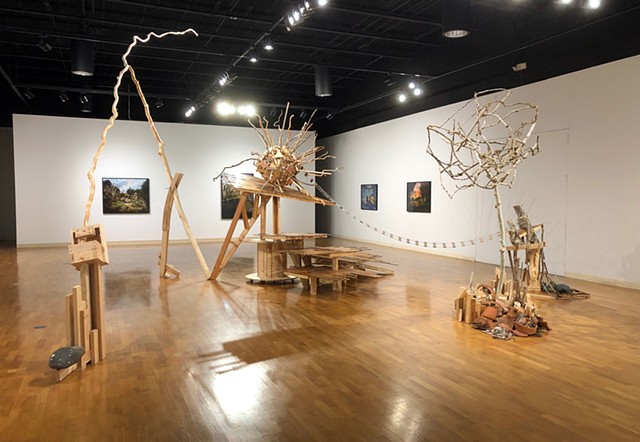Nothing to Fix
My sculptural installations create the sensation of defying gravity while really exploiting the laws of physics. While working, I stack sculptural objects, lifting and leaning them against each other to achieve height and a sense of precariousness. While testing my own physical limitations, I come up with ways to create leverage, or ways to hold things in place temporarily until I can secure them. The physical endeavor parallels internal struggles of various kinds. In particular, I focus on the difficulty to accept apparently contradictory states of being. To do so, I create contradictions in the work. Ladders seem to invite climbing, but are out of reach, or created out of materials that would collapse. These contradictions allow me to transform internal struggle into a visual challenge. The process is really an adult extension of the way very young people use play as a way to test boundaries. Whether it’s a five-year-old who stacks blocks until they fall over, or a thirteen-year-old who jumps from higher and higher precipices on the local playground, people test their own limits by testing their environment. As adults, the limits tested are often emotional and psychological. We grapple with love and loss, very different experiences that are inextricably bound to each other.
Nothing to Fix is part of a series addressing love and loss. The over-arching content is the individual’s struggle to achieve an ideal state while knowing that nothing is permanent. In recent works, I have been exploring the prolonged grieving that I experience for my mother and for my deceased ex-husband. Nothing to Fix adds to this my recent separation from my husband. While my mind continues to search out a way to repair the marriage, the damage is done, and it is time for acceptance. The strange mix of landscape and interior is an environment that invites introspection and discovery, a place to grieve and a place to repair.
